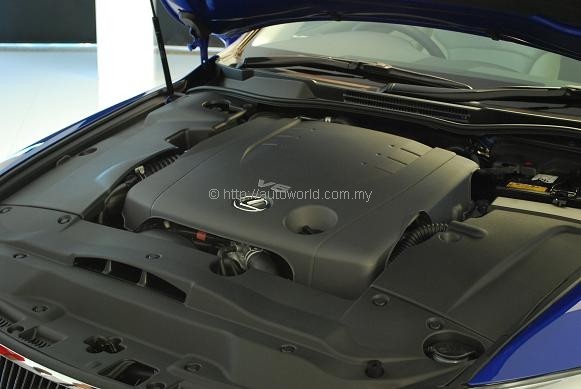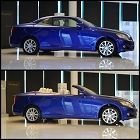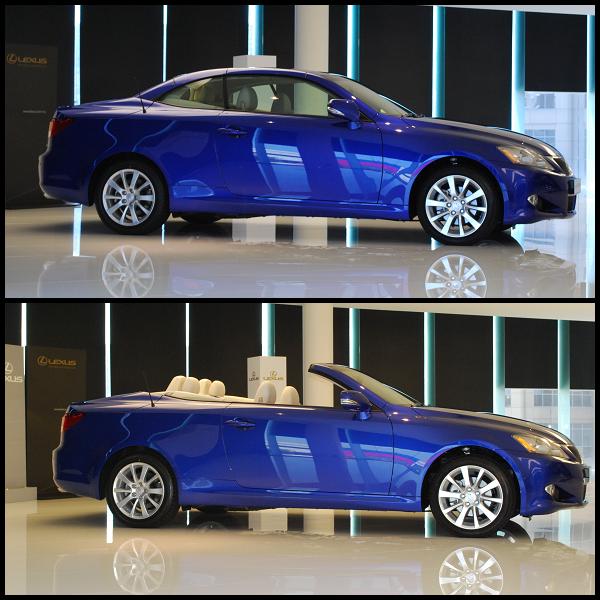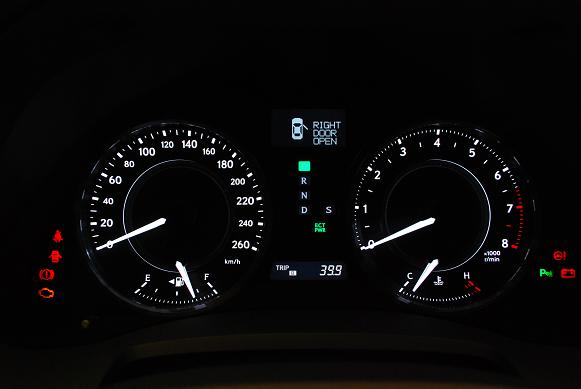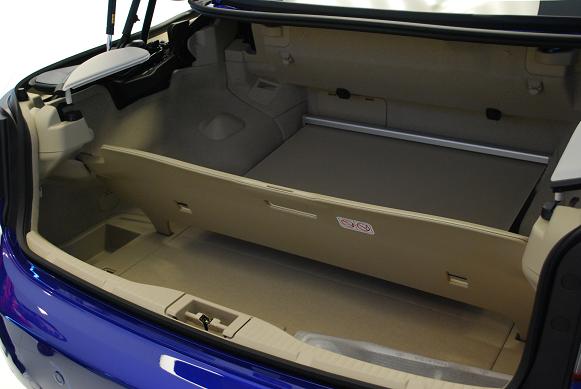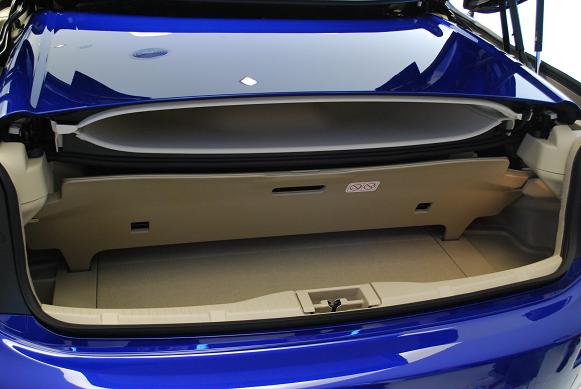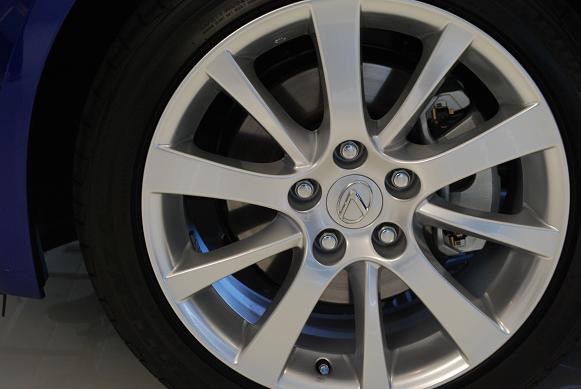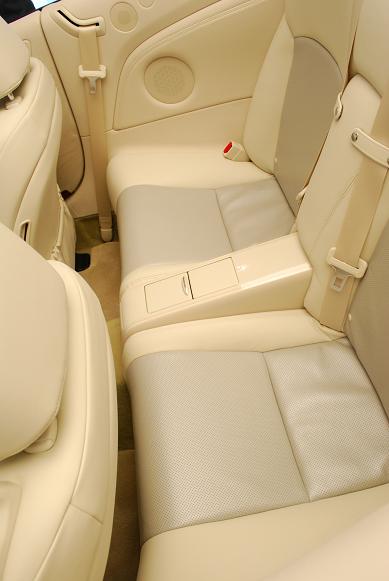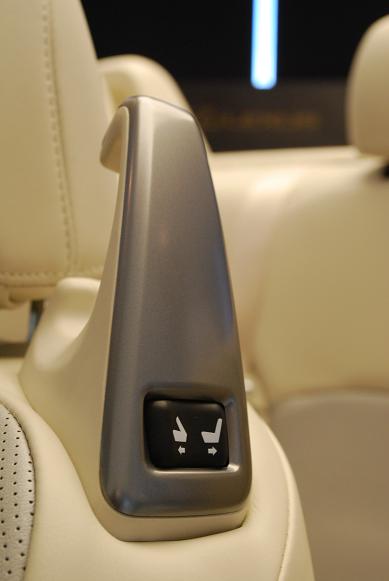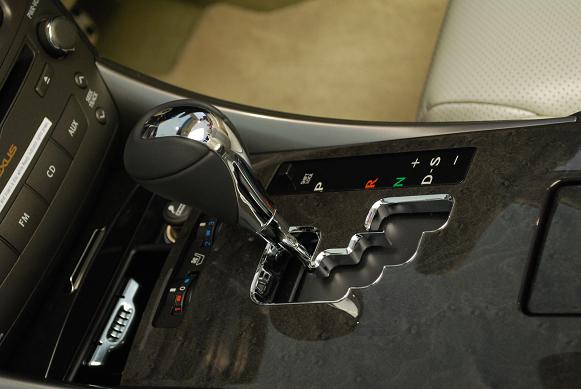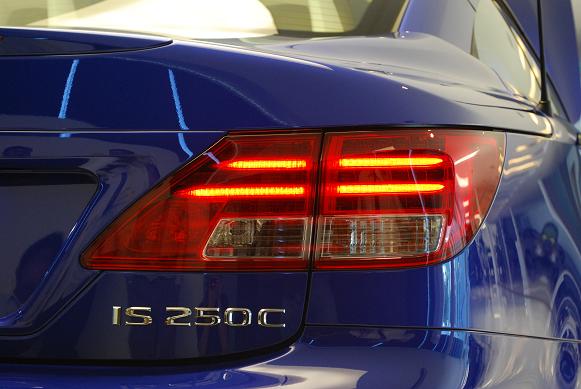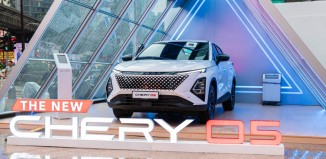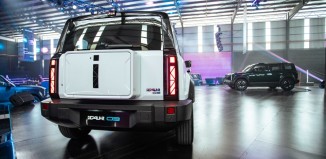Up-close with the Lexus IS 250C
A couple of weeks back, Lexus Malaysia announced the availability of the Lexus IS 250C convertible. Based on the highly acclaimed IS sedan, the IS 250C is only the second convertible in Lexus’ history after the SC 430 (a.k.a. Toyota Soarer).
Don’t let the ‘IS’ badge and resemblance to the sedan fool you into thinking this was as simple an exercise as chopping the top off and replacing the rear doors with fixed panels. It isn’t. Externally, only the headlights, bonnet, side mirror and door handles were taken from the sedan. Everything else, including the front bumper, front fenders and rims, are unique to the convertible.
It is framed by the same set of underpinnings though, illustrated by its wheelbase being identical to the sedan at 2,730mm. Like the sedan, the IS 250C sits on double wishbone suspension up front, and multi-links behind, though mild revisions have been understandably made to accommodate the altered vehicle dynamics.
Additionally, Lexus has bolted on additional bracing and crossmembers to compensate for the IS 250C’s compromised structural integrity. This, together with the added weight of the folding hard top, adds 170kg to the 250C’s kerb weight, bringing it up to 1,730kg.
For obvious reasons, most of you would correctly guess from observation that the IS 250C has a lower overall height than the sedan. Official specs from Lexus quote the 250C’s overall height at 1,415mm, 25mm lower than the sedan. It is nevertheless longer than the sedan by 50mm, measuring 4,635mm from stem to stern.
All of the IS 250C’s additional lengthwise inches went into its stocky bum. Housed in that enlarged rear is the three-piece aluminium hardtop, which folds out of sight in 21 seconds. One-touch folding operation is not provided, as American and European safety regulations call for the use of hold-down switches in operating motorized tops. With the top up, the IS 250C has 550 litres of boot space, and that’s as far as it goes, because the rear seats are non-foldable.
Lexus went to great lengths to point out that the IS 250C was painstakingly engineered to match the performance of its sedan sibling as close as possible. Such objectives call for extensive chassis engineering to deal with inherent dynamic deficiencies of the convertible body structure, in which ride, handling, and refinement are all compromised.
For its chassis, Lexus reinforced the IS 250C at the rocker area, A and B pillar under structure, side collision crossmember, floor crossmembers, and underfloor braces. Improved damping materials all over further aid in the cause of regaining lost refinement. To help cope with added weight over the rear axle, rear suspension mount bushings have been redesigned with enlarged vented discs for the rear wheels, in place of solid rotors used by the sedan.
In the cabin sits a dashboard lifted straight from the IS sedan, which is fine, because there is little wrong with it, except for a digital clock that is distinctly 1980s Japanese fare. The Optitron instrument panel is mildly tweaked to distinguish it from the sedan, and also to enhance its visibility with the top down.
Unlike the sedan, however, the IS 250C is a strict four-seater, and like most convertibles, the rear seats have barely enough space for a grown adult. You won’t want to take more than two people on an outstation cruise with this car. Ingress and egress to the rear is made easy by one-touch buttons operating the power sliding front seats.
As mentioned in a previous article, the IS 250C derives propulsion from the same 2.5-litre direct injection V6 found in the IS 250 sedan. Certified to Ultra-Low Emission Vehicle II (ULEV-II) standards, the all-aluminium dual VVTi powerplant produces 205hp @ 6,400rpm and 252Nm @ 4,800rpm. Mated to the engine is a six-speed automatic transmission with paddle shift manual override.
Hill-start Assist Control is provided to help prevent roll back on slopes. The system holds brake pressure for an additional two seconds when the driver releases the brake pedal from the fully depressed position. This feature is being increasingly offered by some makes already, notably the upcoming Hyundai Sonata and Tucson. A nice touch, but we have no idea why a car not using manual transmission would require such a feature.
On the safety front, the IS 250C comes equipped with Vehicle Dynamics Integrated Management System (VDIM) which governs all of Anti-lock Braking System (ABS), Brake Assist, Vehicle Stability Control (VSC), and Traction Control (TRAC). A total of six airbags are provided – front seat mounted head & torso side airbags (X2), knee airbags (X2), driver and passenger airbags.
The Lexus IS 250C is available for booking immediately, although Lexus Malaysia is bringing in only very small numbers into our shores. Currently, its only natural rival in our market is BMW 325i Convertible, which is sold for just under RM440k without insurance. The IS 250C, with insurance, adds up to RM443,468.20.







